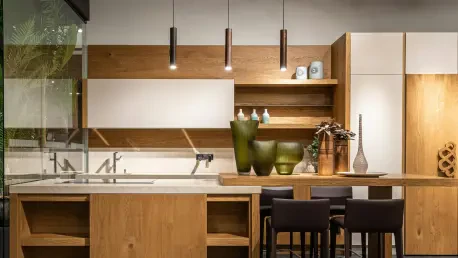In the ever-evolving landscape of home improvement, a seismic shift has hit the kitchen cabinet industry with the introduction of new tariffs on imported wood products, effective since late 2023, sending shockwaves through a sector already navigating a volatile housing market. These tariffs, starting at 25% and escalating to 50% for kitchen cabinets, have added a layer of cost and uncertainty, raising critical questions for manufacturers, dealers, and consumers alike. With homeowner spending on renovations projected to remain stable through mid-2026, this roundup gathers insights from a variety of industry stakeholders—business owners, analysts, and supply chain experts—to explore the multifaceted impacts of these trade policies. The goal is to provide a comprehensive view of the challenges, opportunities, and strategies emerging in response to this pivotal change.
Understanding the Tariff Landscape in Home Improvement
Background on the New Trade Policies
The tariffs, enacted through a presidential proclamation, target a wide array of imported goods, including kitchen cabinets, bathroom vanities, and softwood lumber, as a measure to address national security and combat unfair trade practices. Rates vary significantly by product and country, with kitchen cabinets facing the steepest hikes, while softwood lumber, largely sourced from Canada, carries a 10% tax. Countries like the United Kingdom benefit from a capped rate of 10%, whereas nations such as Vietnam and China bear heavier burdens, reshaping long-standing import patterns.
This policy shift aims to bolster domestic manufacturing, which has seen a decline over decades as production moved overseas. Industry advocacy groups have hailed the move as a potential lifeline for American producers. However, the immediate fallout includes heightened costs and market uncertainty, prompting a closer examination of how different players are reacting to the changing rules of trade.
Why the Stakes Are High for the Industry
Amid a housing market slowed by high mortgage rates, the kitchen cabinet sector stands at a crossroads. Renovation projects, often seen as significant investments for homeowners, are particularly sensitive to price fluctuations. The added financial burden from tariffs could deter consumers, even as forecasts suggest stable spending in the near term. For manufacturers and dealers, the challenge lies in balancing cost absorption with maintaining demand, while also navigating a complex web of global supply chains.
The diverse perspectives on this issue highlight a broader tension between protecting local businesses and preserving affordability. Some see the tariffs as a necessary step to level the playing field, while others warn of unintended consequences that could ripple across the entire home improvement ecosystem. This roundup delves into these contrasting views to uncover the real-world implications.
Diverse Perspectives on Tariff Impacts
Cost Increases and Consumer Reactions
Industry analysts have estimated that the tariffs on cabinets could add around $280 to the cost of building a single-family home, a seemingly modest figure in the context of larger renovation budgets. Yet, many small business owners in the remodeling space caution that even slight price hikes, coupled with rising labor and material costs, may lead to hesitation among clients. Some firms are choosing to absorb these initial increases to shield customers, though this strategy raises concerns about long-term profitability.
On the flip side, certain market observers argue that the impact on consumer behavior might be overstated. They point out that kitchen remodels are often driven by necessity or long-term value addition, suggesting that dedicated homeowners might weather the cost bump. This divergence in opinion underscores the uncertainty surrounding how price sensitivity will play out in real-world scenarios, with outcomes likely varying by region and demographic.
Supply Chain Challenges and Product Availability
Supply chain experts have raised alarms about the potential for reduced product variety as importers pivot toward high-margin items to offset tariff costs. This shift could limit options for budget-conscious buyers, altering the competitive landscape for retailers and contractors. Businesses heavily reliant on imported materials, such as specialized plywood, face additional hurdles, as domestic alternatives remain scarce despite the protective intent of the tariffs.
However, a contrasting viewpoint emerges from some domestic producers who see an opening to fill market gaps with American-made goods. While this opportunity is promising, skeptics note that scaling up production to meet sudden demand poses significant logistical challenges, especially given past bottlenecks in the industry. The tension between restricted supply and potential growth for local manufacturers remains a key point of debate.
Regional Variations and Market Shifts
The tariff structure introduces disparities based on trading partners, influencing import dynamics in unexpected ways. For instance, Canada’s dominant role in supplying 85% of U.S. softwood lumber means that even a modest 10% tax could ripple through construction and cabinet production costs. Meanwhile, higher rates on goods from countries like Vietnam and China are prompting importers to rethink sourcing strategies, potentially benefiting nations with lower tariff caps.
Yet, not all industry voices agree that these regional shifts will uniformly favor domestic firms. Some argue that the interconnected nature of global supply chains could lead to disruptions that outweigh localized gains, especially for businesses dependent on specific international materials. This complexity challenges the notion of tariffs as a straightforward boost to American industry, revealing a patchwork of regional impacts that defy simple predictions.
Industry Sentiment: Hope Versus Hardship
A split in industry outlook reveals cautious optimism among some domestic-focused companies anticipating a surge in demand for U.S.-made cabinets. These businesses view tariffs as a chance to reclaim market share, emphasizing the perceived quality of local products. However, scalability remains a concern, with memories of supply chain struggles during previous crises tempering enthusiasm for rapid growth.
In contrast, firms tied to global material networks express skepticism about gaining a competitive edge, predicting instead a cascade of cost increases that could burden all players. This pessimism is rooted in the reality of sourcing critical components from abroad, where tariffs may inflate expenses without clear benefits. The divide between hopeful domestic producers and wary global operators paints a nuanced picture of an industry grappling with change.
Strategies for Navigating the Tariff Terrain
Practical Tips for Stakeholders
For businesses looking to mitigate the fallout, several strategies have surfaced from industry discussions. Absorbing initial cost hikes, though financially taxing, can help maintain customer loyalty during the transition period. Simultaneously, diversifying supply sources to include more domestic or lower-tariff regions offers a buffer against price shocks, though it requires careful planning and investment.
Another approach gaining traction is marketing the value of American-made products to offset consumer hesitancy. Educating clients on the durability and craftsmanship of local cabinets can shift focus from cost to quality, potentially sustaining demand. Contractors and designers are also encouraged to prepare for supply chain adjustments by building stronger relationships with multiple vendors, ensuring flexibility in sourcing.
Adapting to a New Normal
Beyond immediate tactics, long-term adaptation is a recurring theme among industry insights. Some stakeholders advocate for investing in domestic production capacity, even if it involves upfront costs, to capitalize on tariff-driven opportunities. Others stress the importance of transparent communication with clients about price changes, framing them as part of a broader push for economic resilience.
A balanced perspective suggests combining these efforts with a keen eye on market trends. Monitoring consumer behavior and regional disparities can help businesses anticipate shifts in demand, allowing for proactive rather than reactive measures. This strategic mindset, blending short-term coping mechanisms with visionary planning, emerges as a critical tool for navigating the tariff landscape.
Reflecting on the Tariff Debate
Looking back, the discourse surrounding the new tariffs on kitchen cabinets and related products revealed a deeply divided industry, caught between aspirations for domestic revival and the harsh realities of global trade dependencies. The insights gathered from various stakeholders painted a picture of immediate hardship tempered by flickers of long-term potential. As costs rose and supply chains strained, the resilience of businesses and consumers alike was tested in unprecedented ways.
Moving forward, the path ahead demands innovative solutions and collaborative efforts. Industry players are encouraged to explore partnerships that bolster domestic manufacturing while advocating for policies that balance protectionism with affordability. Further reading on trade policy impacts and home improvement trends can provide deeper context for these challenges. Ultimately, the journey through this tariff era calls for adaptability and a commitment to turning obstacles into stepping stones for a stronger, more self-reliant sector.









